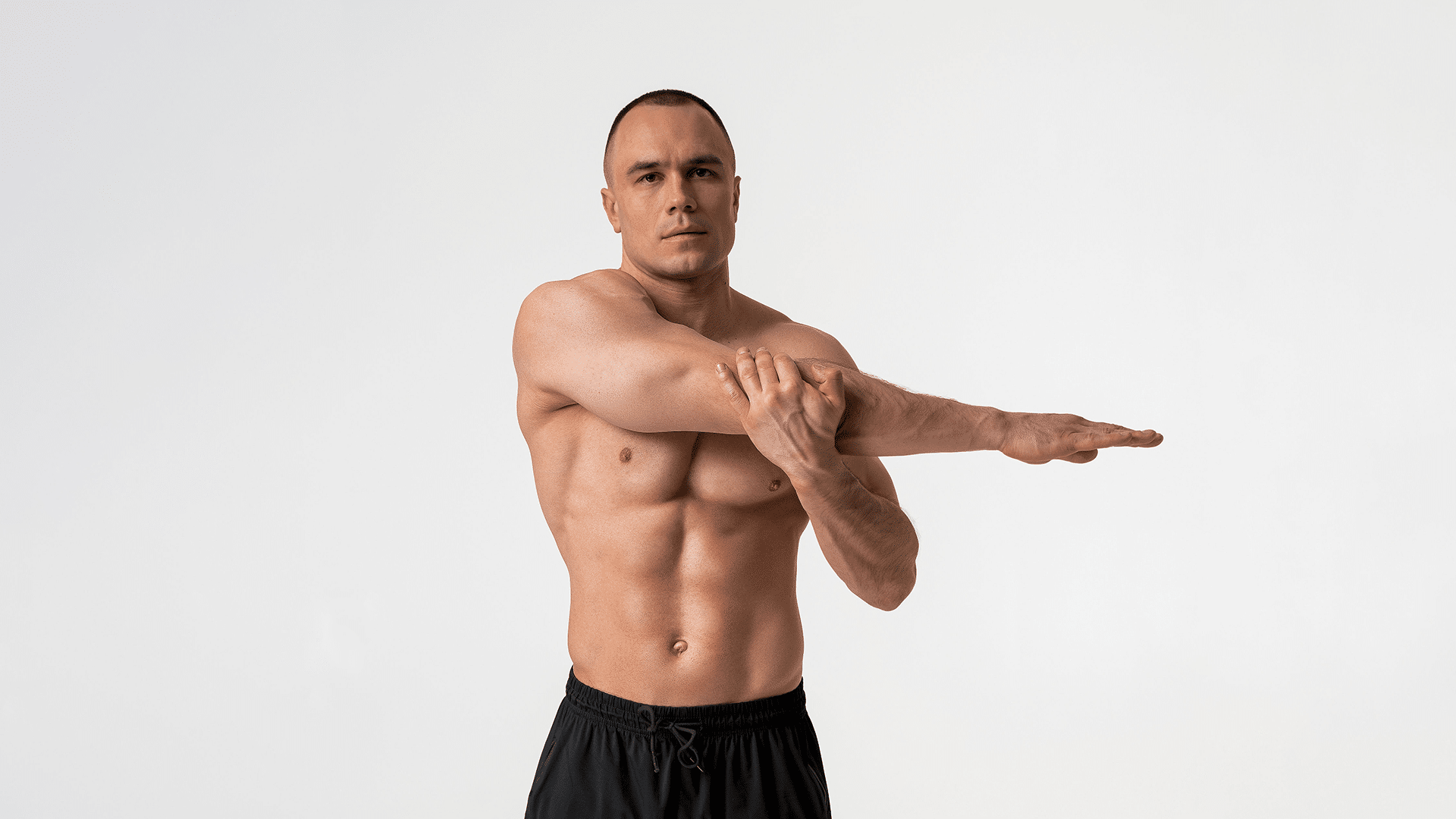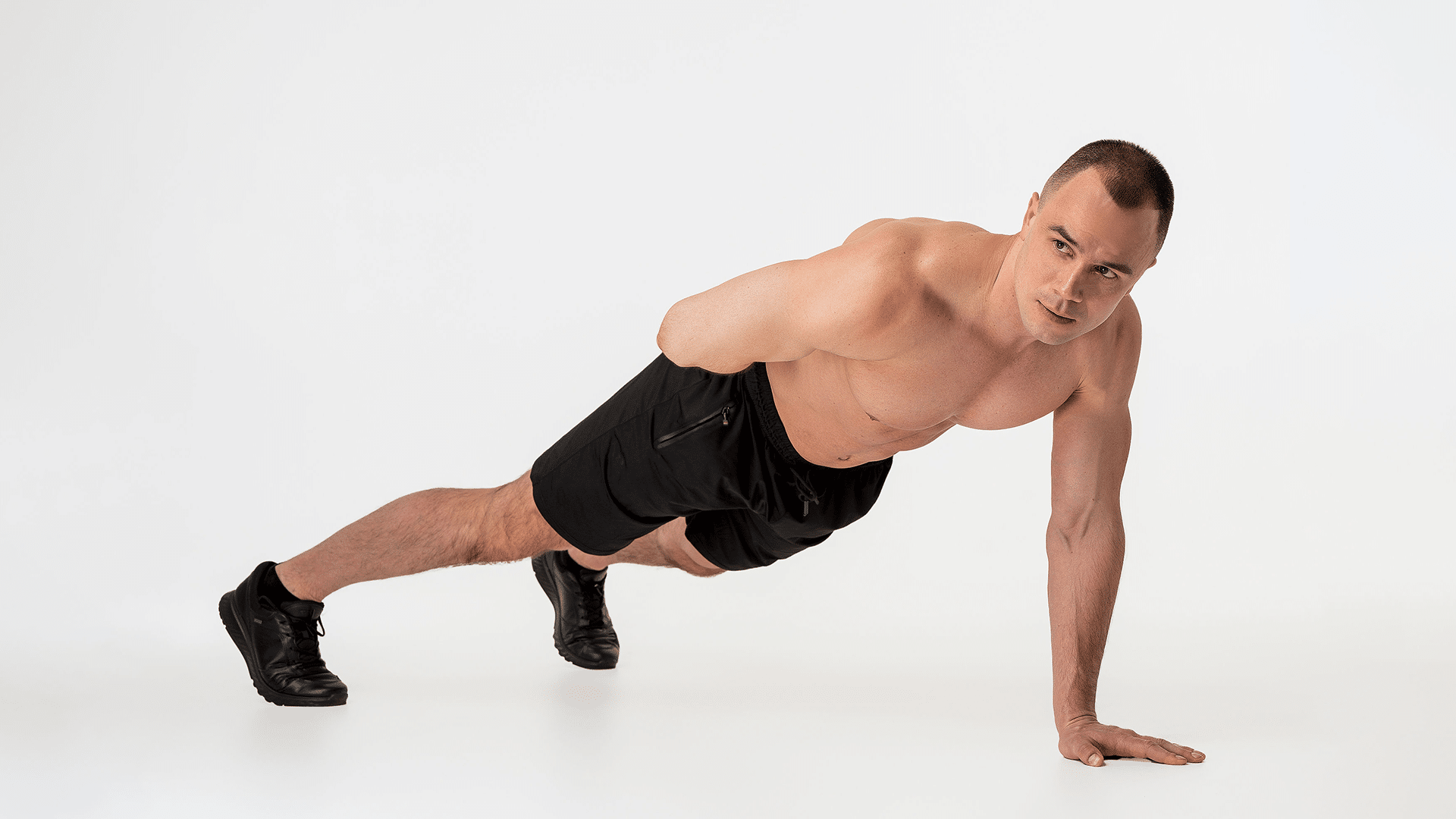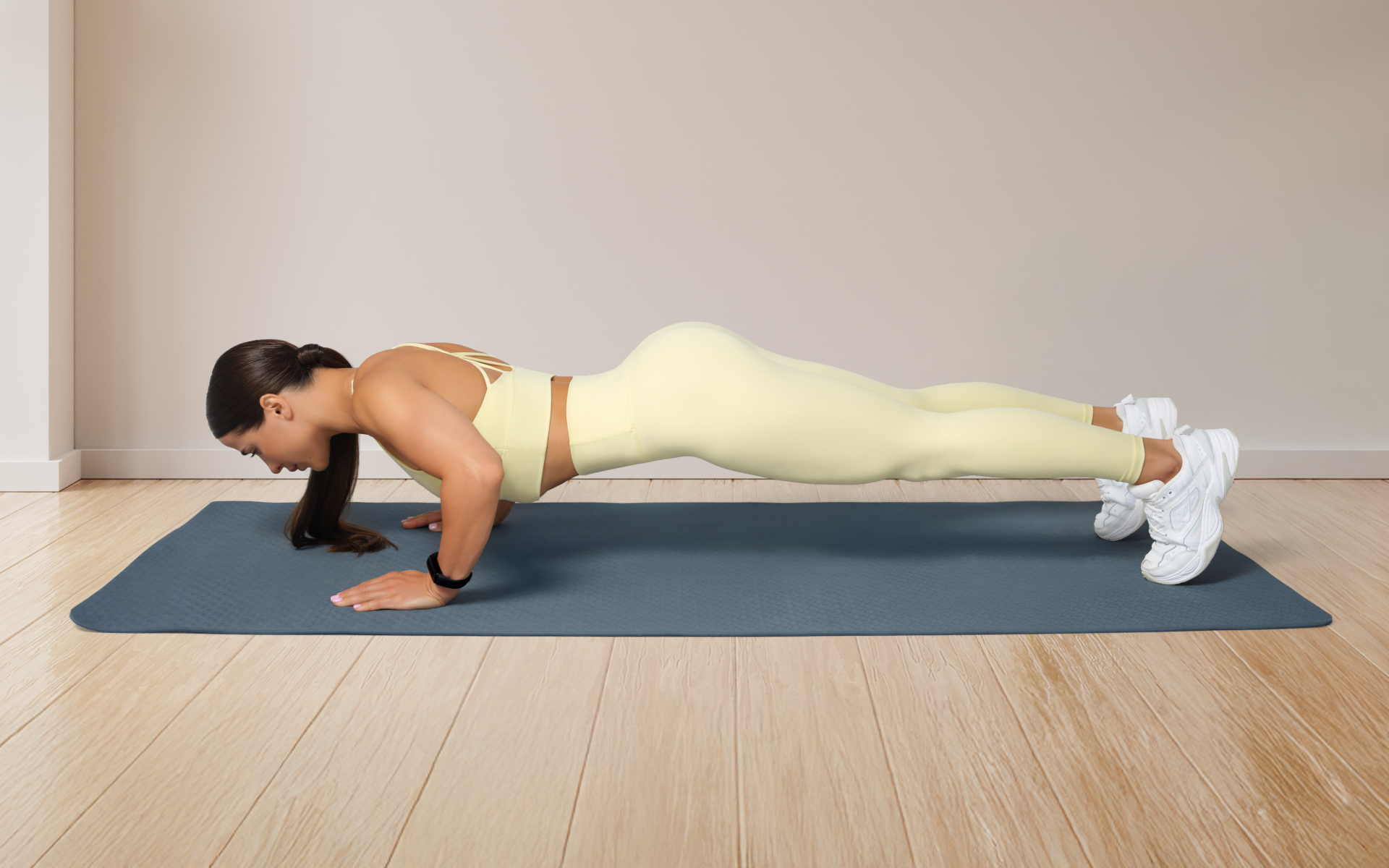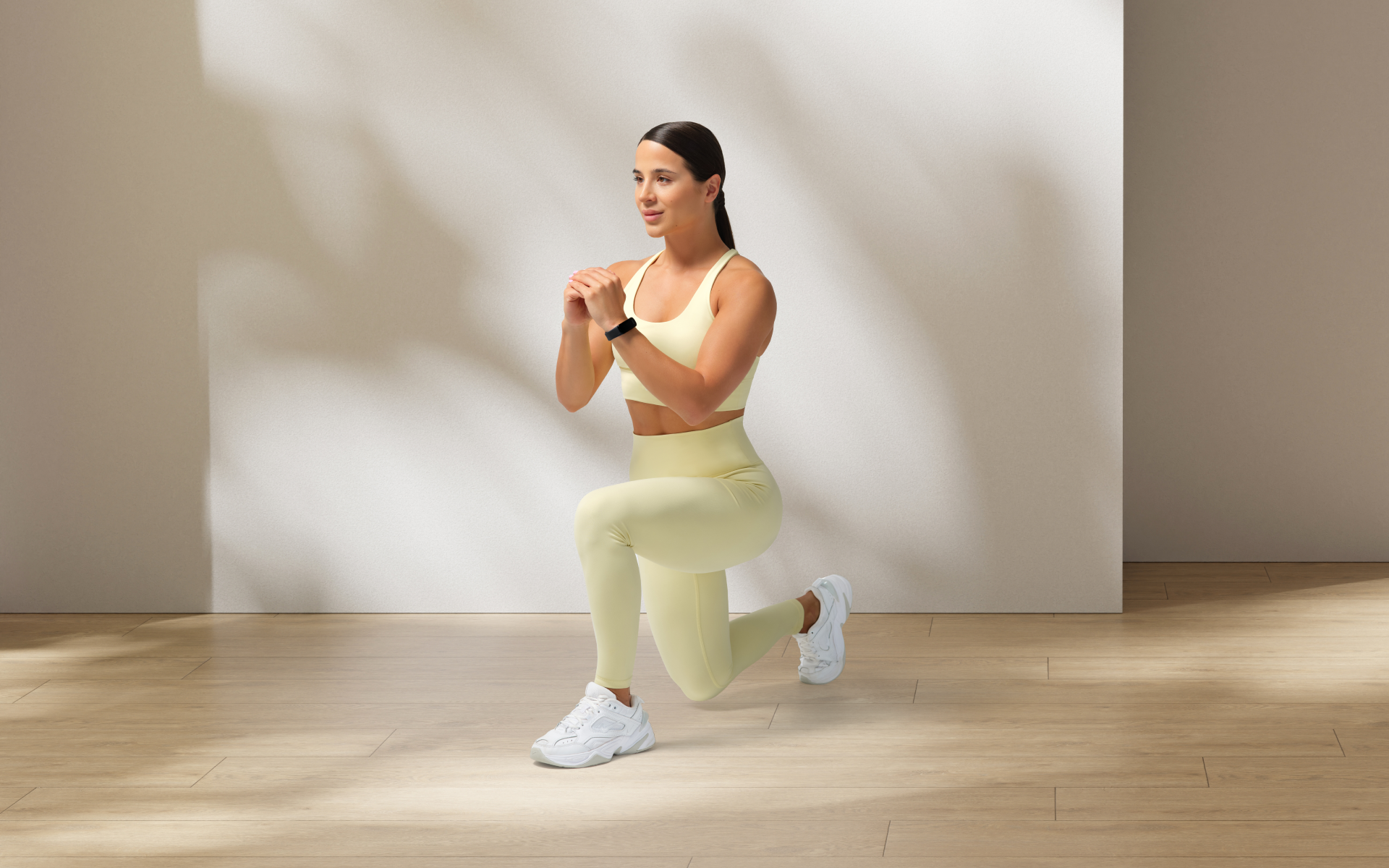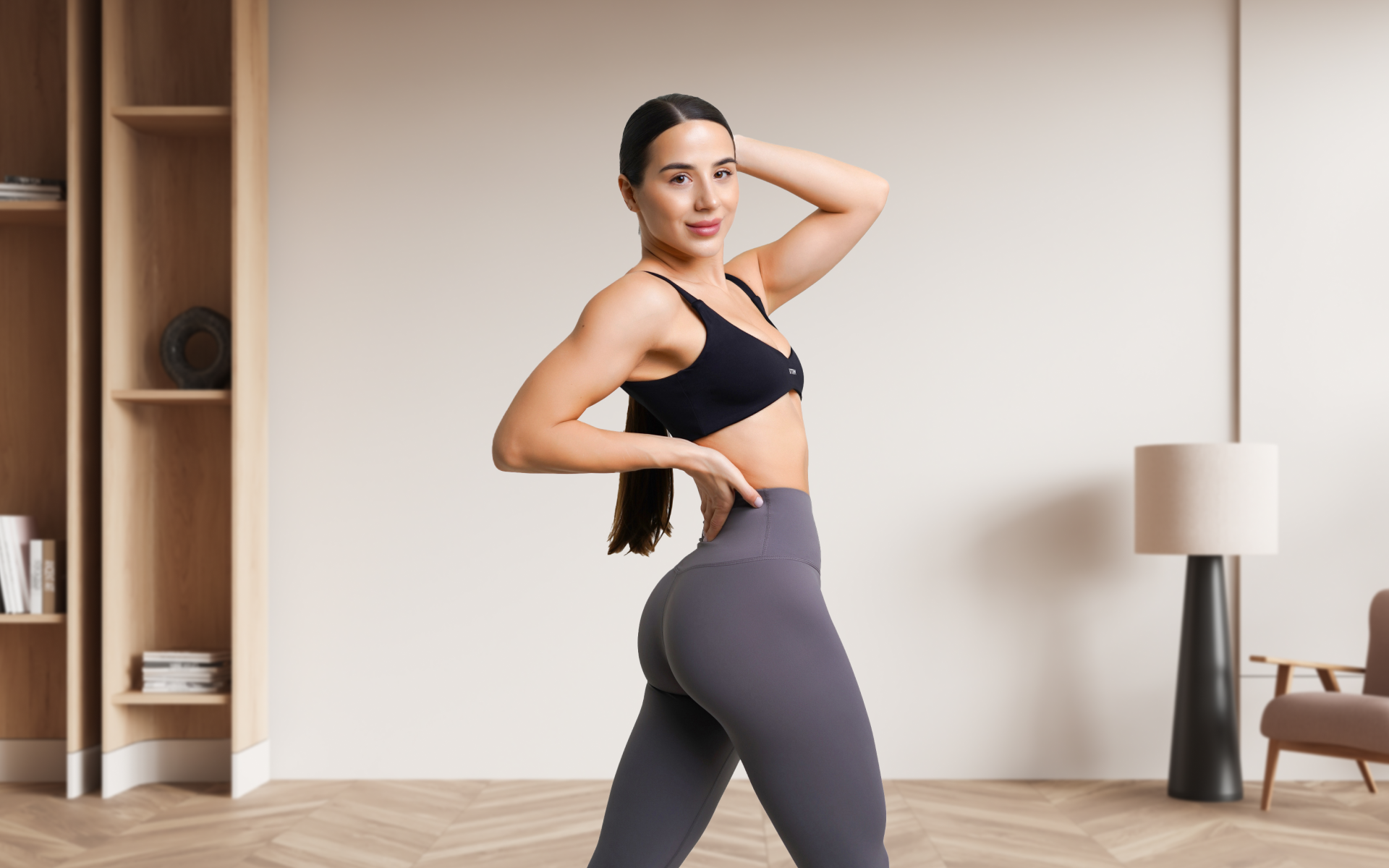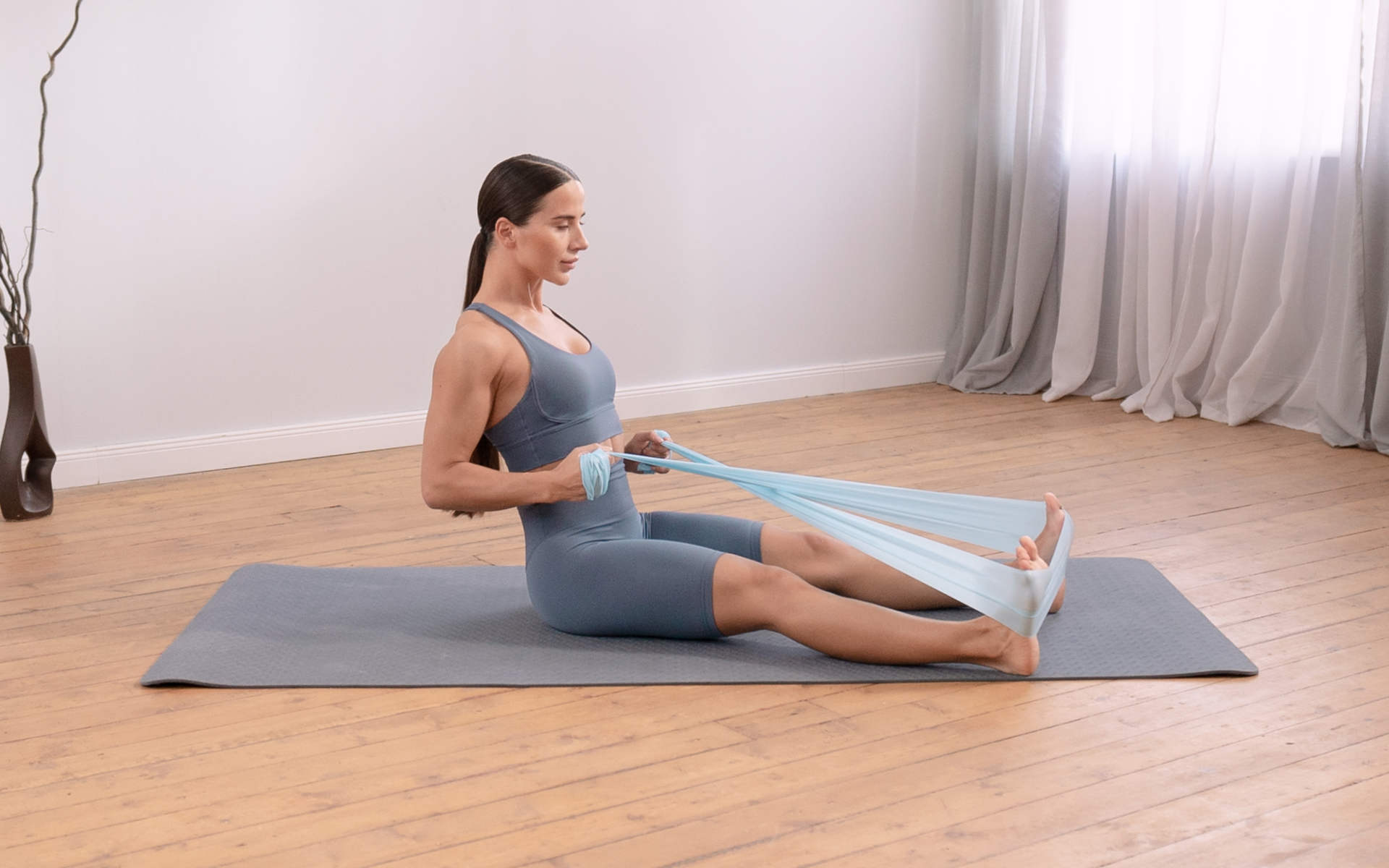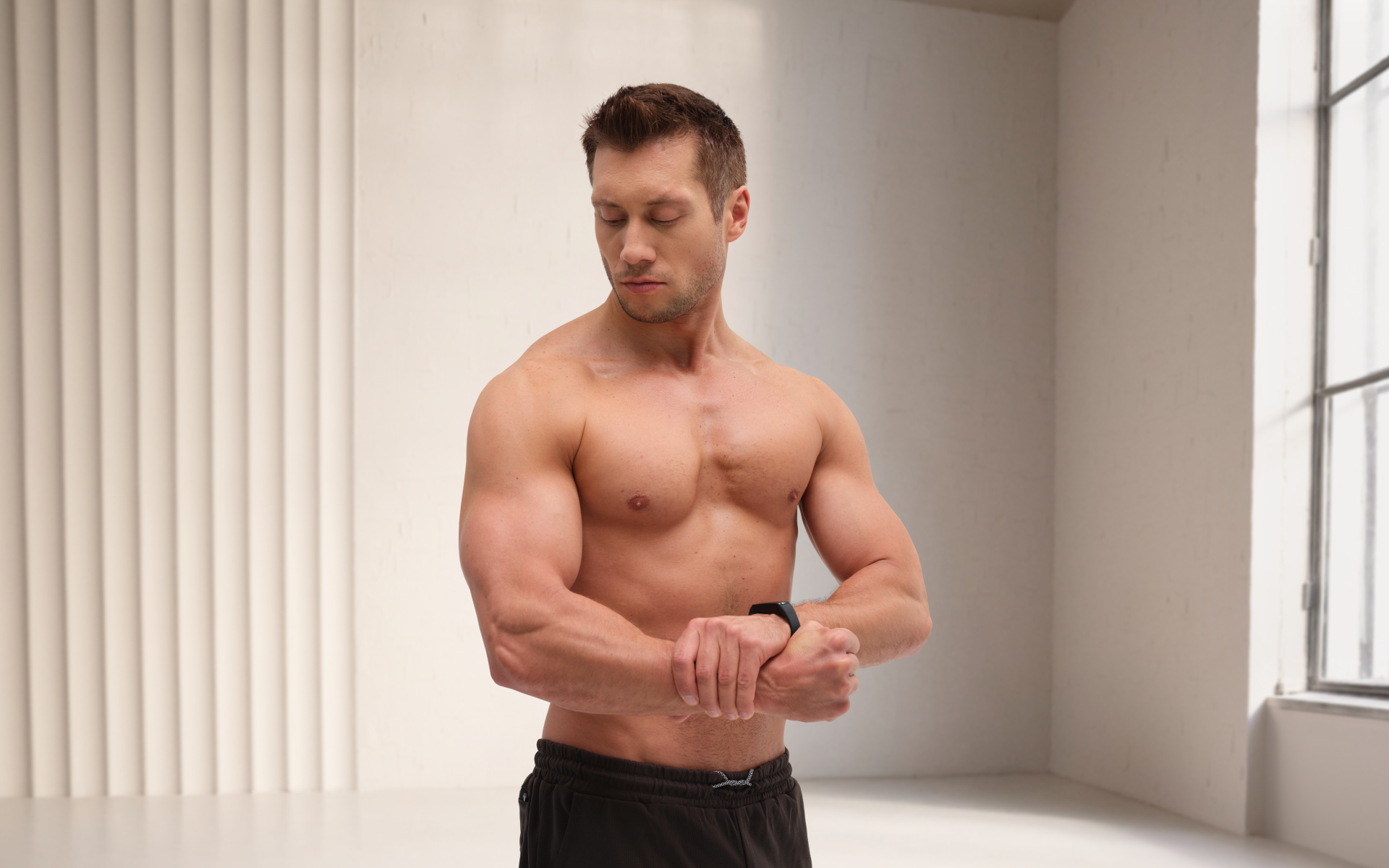The term “calisthenics body types” doesn’t refer to a specific concept in fitness or exercise science. However, this might be used to refer to the body types that can be achieved through calisthenics training.
Calisthenics is a form of exercise that uses one’s own body weight for resistance. This includes exercises like push-ups, pull-ups, squats, and lunges. Over time, consistent calisthenics training can result in a lean, muscular physique. The exact look of this physique can vary based on factors like genetics, diet, and the specific exercises included in a person’s routine.
Beyond the aesthetic benefits (looking good in a swimsuit, anyone?), there are also numerous real-life benefits to having a calisthenics body type.
Let’s get into it, and we’ll also offer tips for calisthenics training that match your current body type.
What Is a Calisthenics Body Type?
Calisthenics is known for its ability to build a lean, toned body. But what exactly is a calisthenics body type?
The answer is not so straightforward, as there isn’t one specific look or physique associated with calisthenics. This is because different body types can be achieved through calisthenics training, depending on factors such as genetics and diet.
Some people may have a more muscular build, while others may have a leaner physique with defined muscles.
Regardless of the specific appearance, a calisthenic body type is generally characterized by:
- Lean Muscle Mass: Calisthenics exercises use your own body weight as resistance, which helps build lean muscle mass. This type of muscle is characterized by a toned, defined look rather than bulky mass (6).
- Low Body Fat: In order to achieve that lean, muscular look, a calisthenics body type typically has a low body fat percentage. This can be achieved through proper nutrition and consistent exercise.
- Balanced Physique: Calisthenics training works the entire body, targeting all muscle groups. This can result in a well-balanced and symmetrical physique (6).
In terms of general body types, there are three primary categories that people tend to fall into: ectomorph, mesomorph, and endomorph.
- Ectomorphs are typically characterized as slim with a fast metabolism. They may have a harder time building muscle but tend to have a lean physique (1).
- Mesomorphs are often described as athletic and naturally muscular. They tend to build muscle easily and can also stay relatively lean with proper nutrition (1).
- Endomorphs typically have a larger frame and may struggle with losing body fat. However, with calisthenics training, they can achieve a toned and defined physique (1).
Calisthenics can be beneficial for all body types and can help improve strength, flexibility, and overall fitness.
BetterMe app will provide you with a host of fat-frying fitness routines that’ll scare the extra pounds away and turn your body into a masterpiece! Get your life moving in the right direction with BetterMe!
Why Do Calisthenics Athletes Look So Good?
Calisthenics athletes look good because of the combination of strength, muscle definition, and low body fat that results from this type of training.
The nature of calisthenics exercises also requires a lot of body control and coordination, which can contribute to a more aesthetically pleasing physique.
Additionally, calisthenics training often involves high-intensity interval training (HIIT), which is effective for burning fat and building lean muscle mass.
6 Real-Life Benefits of Having a Calisthenics Body Type
Looking good is only one benefit of having a calisthenics body type. Here are six other real-life benefits that come with this type of physique:
Functional Fitness
Functional fitness refers to a system of exercises that prepares the body for real-life activities and movements. This is a key aspect of calisthenics training, as it involves using your own body weight to perform exercises similar to those used in everyday life (6).
By building functional strength through calisthenics you can improve your ability to perform daily tasks with ease and prevent injuries (9).
For example, squats can help you build strength for activities like gardening or lifting heavy objects, while pull-ups can improve your ability to hoist yourself over a wall or fence.
An even more practical example is using an exercise like the push-up to train for activities like pushing a heavy door or carrying groceries.
Better Mobility and Flexibility
Mobility refers to a person’s ability to move freely and easily. Calisthenics exercises often involve full-body movements which require a wide range of motion, improving overall mobility (6).
Having good mobility can make everyday tasks easier and help prevent injuries from movements that require more flexibility (10).
Flexibility, on the other hand, is the range of motion in a specific joint or muscle group. Calisthenics body type exercises can help improve flexibility by targeting different muscle groups and joints, promoting overall functional movement.
Improved Strength and Muscular Endurance
Muscle strength and endurance are crucial components of overall physical fitness. Strength is simply the amount of force a muscle can generate, while endurance is the ability to perform repetitive movements for an extended period.
Calisthenics training involves bodyweight exercises and often uses high reps and short rest periods, which can help improve both strength and muscular endurance (9). This can be beneficial in real-life situations that require physical strength and stamina, such as carrying heavy objects or performing manual labor.
Athletes stand to benefit greatly from improved strength and endurance, as it can enhance their performance in sports (4).
Read more: The Simplest Lower Back Calisthenics Guide for Beginners
Enhanced Body Control and Balance
Coordinated movements play a big role in calisthenics exercises, requiring a high level of body control and balance. This type of training can improve proprioception, which is the awareness and sense of position, movement, and coordination of one’s body (6).
Having good body control and balance can help with activities such as dancing, sports, and even everyday tasks like climbing stairs or carrying a child.
Improved Mental Health
Regular exercise, including calisthenics, has been shown to have numerous mental health benefits. This includes reducing stress and anxiety levels, improving mood and self-esteem, and promoting better sleep (7).
The physical challenges involved in calisthenics training can also boost confidence and provide a sense of accomplishment, which can positively impact overall mental well-being.
Can You Shape Your Body With Calisthenics?
Yes, you can shape your body with calisthenics. As mentioned earlier, calisthenics exercises can help build lean muscle mass and lower body fat percentage, resulting in a more defined physique.
However, it’s important to note that genetics also play a role in how one’s body looks. Some individuals may naturally have a more muscular or lean frame, while others may have to work harder to achieve a certain shape.
A customized calisthenics body workout that takes into account individual goals and body type can help shape and tone the body. Consistency and proper nutrition are also key in achieving desired results with calisthenics training.
Calisthenics Body Type Workout for Ectomorphs
Ectomorphs, or individuals with a naturally slim build, may have to work harder to build muscle and achieve a more defined physique (2).
A calisthenics body type workout for ectomorphs will focus on high-volume and moderate to high-intensity exercises.
The idea is to increase muscle mass and improve muscle definition through challenging movements.
Diet choices for ectomorphs trying to build muscle through calisthenics training should include a calorie surplus, a high protein intake, and adequate rest and recovery (3).
Our Calisthenics Diet guide has tips on how to optimize nutrition for calisthenics training.
Here’s a sample calisthenics workout for ectomorphs:
Warm-Up: 5-10 minutes of dynamic stretching and light cardio (jumping jacks, high knees, etc.)
Circuit 1:
- Pull-ups (3 sets of 8-12 reps)
- Diamond push-ups (3 sets of 12-15 reps)
- Jump squats (3 sets of 15-20 reps)
Rest for 1-2 minutes between each set.
Circuit 2:
- Inverted rows (3 sets of 8-12 reps)
- Tricep dips (3 sets of 12-15 reps)
- Lunges (3 sets of 10-12 reps per leg)
Rest for 1-2 minutes between each set.
Circuit 3:
- Chin-ups (3 sets of 8-12 reps)
- Pike push-ups (3 sets of 10-15 reps)
- Bulgarian split squats (3 sets of 10-12 reps per leg)
Rest for 1-2 minutes between each set.
Cool Down: Stretching for all major muscle groups, holding each stretch for 30-40 seconds.
Betterme will keep you laser-focused on your weight loss journey! Nutrient-packed meal plans, fat-blasting workouts, galvanizing challenges and much more. Try using the app and see for yourself!
Calisthenics Body Type Workout for Mesomorphs
Mesomorphs, or individuals with a naturally muscular and athletic build, may have an easier time building muscle and leaning out through calisthenics training (2).
A calisthenics body type workout for mesomorphs will focus on moderate volume and high-intensity exercises to maintain muscle mass and promote muscle definition.
Diet choices for mesomorphs trying to lean out through calisthenics training should include a balanced and nutritious diet with a slight calorie deficit (3).
Here’s a sample calisthenics workout for mesomorphs:
Warm-Up: 5-10 minutes of dynamic stretching and light cardio (jumping jacks, high knees, etc.)
Circuit 1:
- Muscle-ups (3 sets of 6-8 reps)
- Wide-grip push-ups (3 sets of 12-15 reps)
- Box jumps (3 sets of 10-12 reps)
Rest for 1-2 minutes between each set.
Circuit 2:
- L-sit pull-ups (3 sets of 6-8 reps)
- Dips (3 sets of 12-15 reps)
- Pistol squats (3 sets of 8-10 reps per leg)
Rest for 1-2 minutes between each set.
Circuit 3:
- Front lever rows (3 sets of 6-8 reps)
- Handstand push-ups (3 sets of 8-12 reps)
- Single-leg deadlifts (3 sets of 8-10 reps per leg)
Rest for 1-2 minutes between each set.
Cool Down: Stretching for all major muscle groups, holding each stretch for 30-40 seconds.
Read more: Calisthenics Shoulder Exercises: Techniques and Workouts
Calisthenics Body Type Workout for Endomorphs
Endomorphs, or individuals with a naturally broader and stockier build, may have to focus on weight loss in addition to building muscle through calisthenics training (2).
A calisthenics body type workout for endomorphs will focus on moderate volume and moderate-intensity exercises that promote fat loss, while building lean muscle mass.
Diet choices for endomorphs trying to lose weight and build muscle through calisthenics training should include a balanced diet with a calorie deficit, high protein intake, and moderate carbohydrate intake (3).
Here’s a sample calisthenics workout for endomorphs:
Warm-Up: 5-10 minutes of dynamic stretching and light cardio (jumping jacks, high knees, etc.)
Circuit 1:
- Chin-ups (3 sets of 8-12 reps)
- Push-ups (3 sets of 10-15 reps)
- Bodyweight squats (3 sets of 15-20 reps)
Rest for 1-2 minutes between each set.
Circuit 2:
- Inverted rows (3 sets of 8-12 reps)
- Dips (3 sets of 10-15 reps)
- Lunges (3 sets of 10-12 reps per leg)
Rest for 1-2 minutes between each set.
Circuit 3:
- Pull-ups (3 sets of 8-12 reps)
- Pike push-ups (3 sets of 10-15 reps)
- Bulgarian split squats (3 sets of 10-12 reps per leg)
Rest for 1-2 minutes between each set.
Cool Down: Stretching for all major muscle groups, holding each stretch for 30-40 seconds.
Our Stretching Calisthenics guide has more information on the importance of stretching in calisthenics and how to incorporate it into your workout routine.
FAQs
Is Calisthenics Mainly Upper Body?
Calisthenics exercises can target both the upper and lower body. However, some fundamental movements, such as pull-ups and push-ups, primarily engage the muscles in the upper body. It’s important to have a balanced calisthenics workout routine that includes exercises for all muscle groups.
Is A Calisthenics Body More Attractive?
A lean toned physique, which can be achieved through calisthenics, is certainly attractive to many people. However, attractiveness is subjective and everyone has their preferences.
Beyond physical attraction, a calisthenic body type is healthy. Having a lower body fat percentage and stronger muscles can lead to better overall health and reduced risk of chronic diseases.
Is 20 Minutes of Calisthenics Enough?
20 minutes of calisthenics can be an effective workout if you focus on high-intensity exercises and limit rest time between sets. However, for optimal results, it’s recommended to aim for at least 30-45 minutes of calisthenics training, allowing for a more comprehensive and well-rounded workout.
Which Is Harder, Calisthenics or The Gym?
Gym workouts are harder than calisthenics when you’re just starting out, as it has a more challenging learning curve. You’ll need to master the form of each exercise, learn how to use weights and machines, consider your safety and even learn gym etiquette. However, once you have a good understanding of these factors, you may find gym workouts just as simple as calisthenics.
Why Calisthenics Is Better Than The Gym?
Calisthenics is better than gym workouts because it does not require any expensive equipment or gym membership. It can be done anywhere, at any time, making it convenient for those with busy schedules or limited access to a gym. Calisthenics also promotes functional strength and body control, which can benefit daily activities and sports performance.
What Happens If You Only Do Calisthenics?
If you only do calisthenics, you can still achieve significant muscle growth and strength gains. However, to continue progressing and challenging your muscles, it’s important to continually increase the difficulty of exercises or add additional weight (5). It’s also recommended to incorporate other forms of exercise such as cardio and resistance training for overall fitness (8).
The Bottom Line
A calisthenic body type is characterized by a lean, toned physique with low body fat and balanced muscle development. This type of training can benefit all body types and provide functional fitness, improved mobility and flexibility, strength and endurance, enhanced body control and balance, and even mental health benefits.
DISCLAIMER:
This article is intended for general informational purposes only and does not serve to address individual circumstances. It is not a substitute for professional advice or help and should not be relied on for making any kind of decision-making. Any action taken as a direct or indirect result of the information in this article is entirely at your own risk and is your sole responsibility.
BetterMe, its content staff, and its medical advisors accept no responsibility for inaccuracies, errors, misstatements, inconsistencies, or omissions and specifically disclaim any liability, loss or risk, personal, professional or otherwise, which may be incurred as a consequence, directly or indirectly, of the use and/or application of any content.
You should always seek the advice of your physician or other qualified health provider with any questions you may have regarding a medical condition or your specific situation. Never disregard professional medical advice or delay seeking it because of BetterMe content. If you suspect or think you may have a medical emergency, call your doctor.
SOURCES
- BODY TYPES: MESOMORPH, ECTOMORPH, & ENDOMORPH EXPLAINED (n,d,nasm.org)
- Body Types Training (n,d,ntcc.edu)
- Body Type Training and Nutrition (n,d,ctfassets.net)
- Muscular Endurance for Athletic Performance (2022,se.edu)
- Progression of volume load and muscular adaptation during resistance exercise (2014,nih.gov)
- The advantages of body-weight exercise (2012,harvard .edu)
- The anxiolytic effects of resistance exercise (2014,nih.gov)
- The benefits of adding cross training to your exercise routine (2018,msu.edu)
- The Effect of Breaking Up Sedentary Time with Calisthenics on Neuromuscular Function: A Preliminary Study (2022,nih.gov)
- The role of flexibility in injury prevention and athletic performance: have we stretched the truth? (2003,mih.gov)

